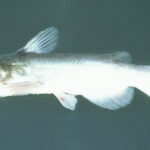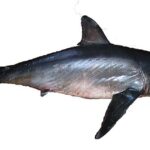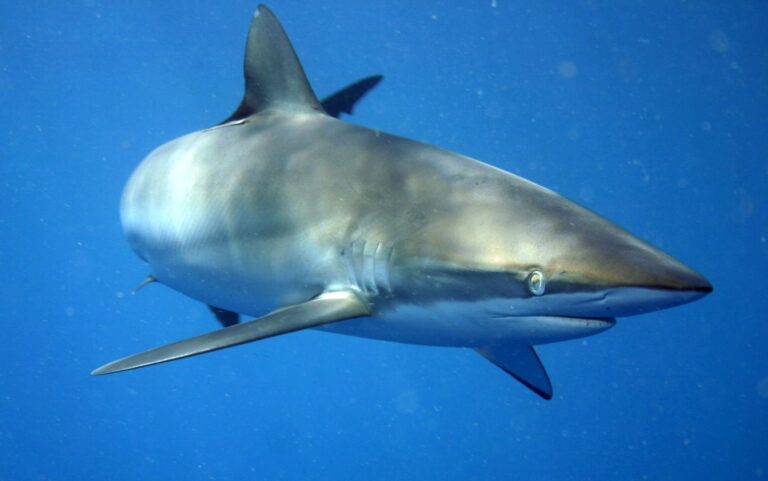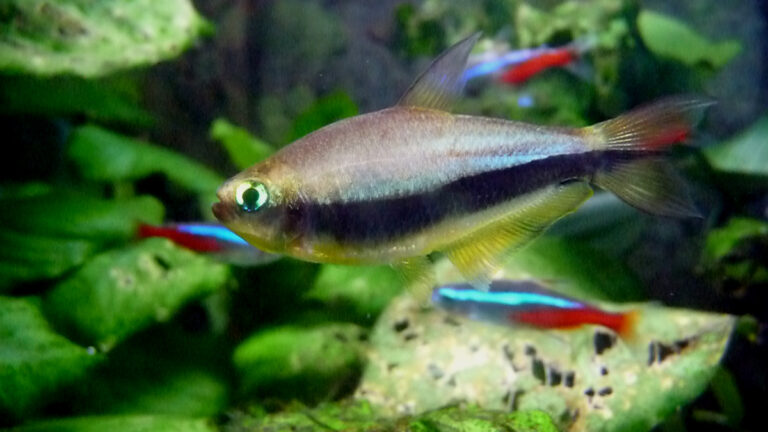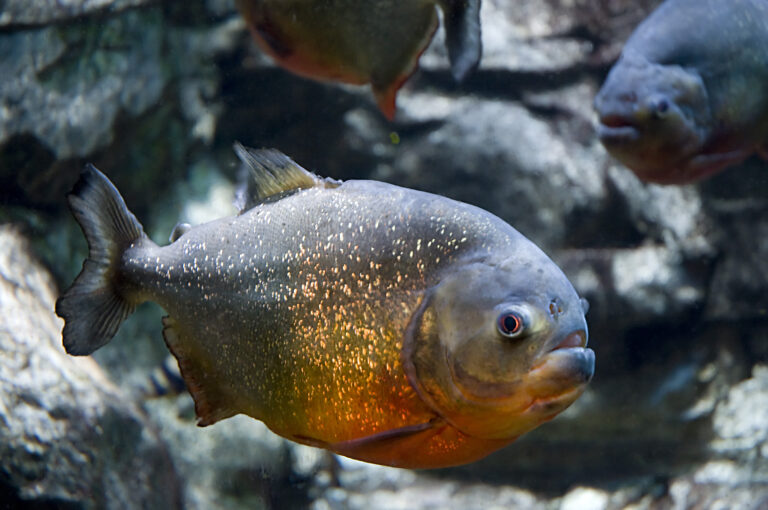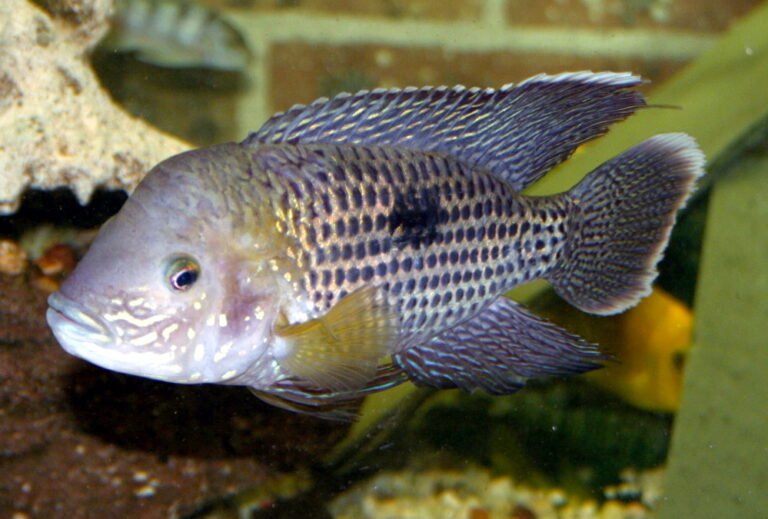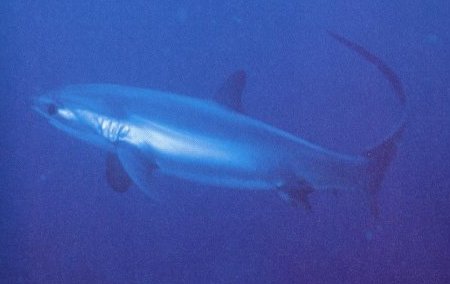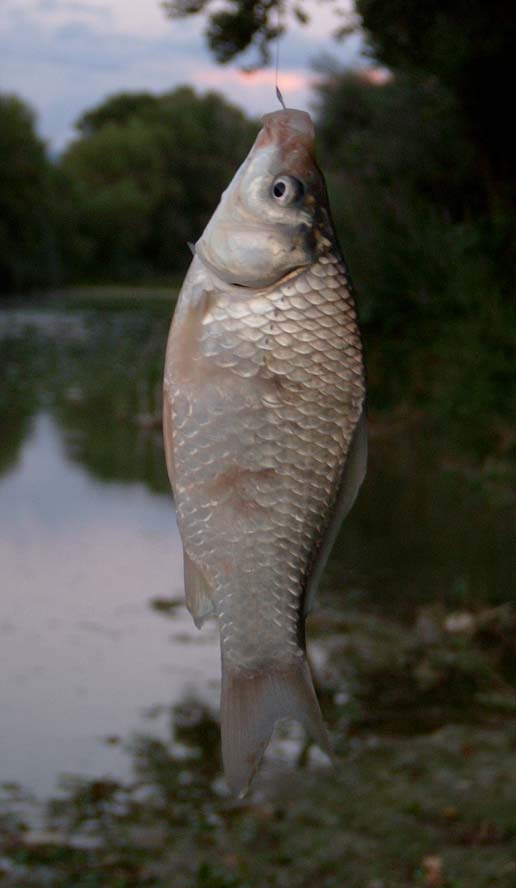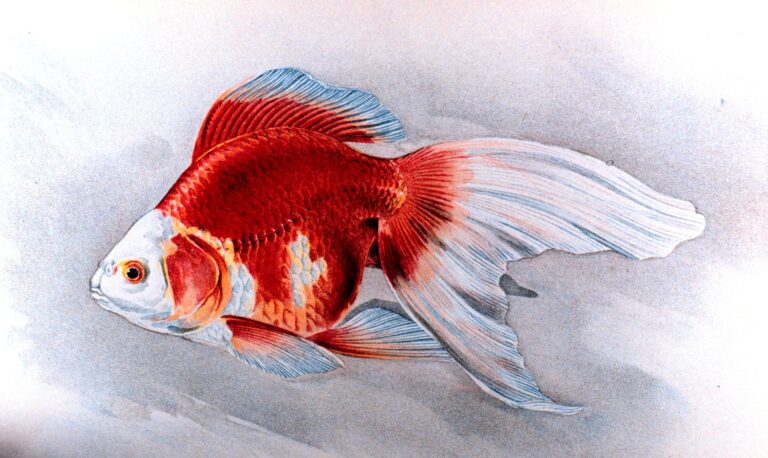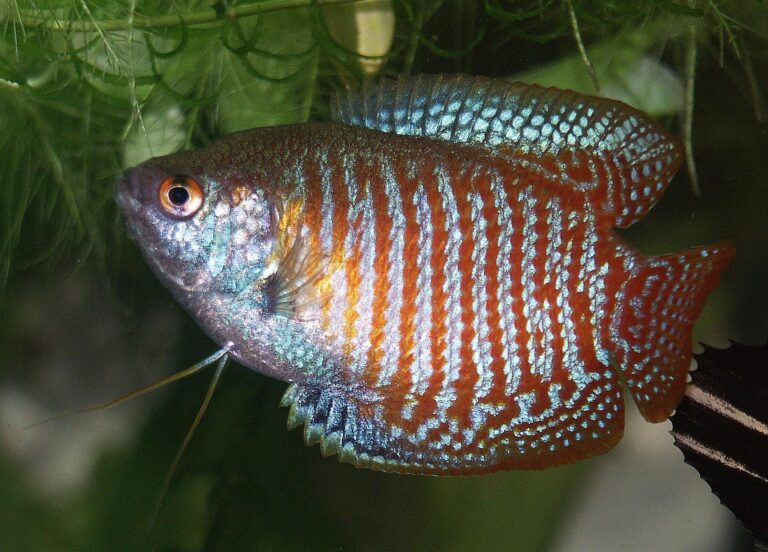Dusky Shark
By Ryan Maron | Last Modified: July 12, 2025
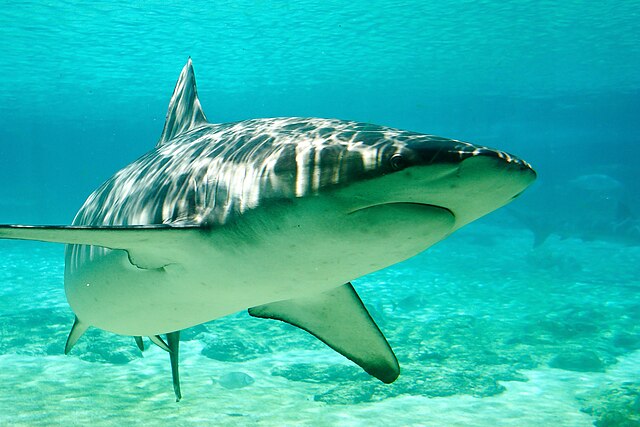
The Dusky Shark represents one of the most ecologically significant yet vulnerable large predators inhabiting coastal and pelagic waters worldwide. Known scientifically as *Carcharhinus obscurus*, this apex predator plays a crucial role in maintaining the delicate balance of marine ecosystems through its position at the top of the food chain. The species derives its common name from the characteristic dusky coloration along its dorsal surface, which provides effective camouflage in open ocean environments.
This large-bodied shark species holds particular importance for marine biologists and conservation efforts due to its extremely slow reproductive rate and late sexual maturity, making it exceptionally vulnerable to overfishing pressures. The Dusky Shark’s wide-ranging migrations and preference for both coastal and offshore habitats place it at the intersection of multiple fishing industries, from commercial longline operations to recreational fishing. Understanding this species becomes essential for developing effective conservation strategies and maintaining healthy ocean ecosystems.
| Feature | Details |
|---|---|
| Common Name | Dusky Shark |
| Scientific Name | Carcharhinus obscurus |
| Family | Carcharhinidae |
| Typical Size | 250-365 cm, 160-347 kg |
| Habitat | Coastal and pelagic waters |
| Diet | Fish, rays, cephalopods |
| Distribution | Worldwide in warm temperate waters |
| Conservation Status | Vulnerable |
Taxonomy & Classification
The Dusky Shark belongs to the family Carcharhinidae, commonly known as requiem sharks, which represents the largest family of sharks with over 50 species. First described by French naturalist Charles Alexandre Lesueur in 1818, *Carcharhinus obscurus* derives its scientific name from the Latin “obscurus,” meaning dark or dusky, referencing the species’ characteristic coloration pattern.
Within the genus *Carcharhinus*, the Dusky Shark shares close evolutionary relationships with other large-bodied species including the Sandbar Shark and the Galapagos shark. Molecular phylogenetic studies have revealed that the Dusky Shark diverged from its closest relatives approximately 20-25 million years ago during the Miocene epoch.
The species exhibits considerable genetic diversity across its global range, with distinct populations showing subtle morphological variations. Atlantic and Pacific populations display slight differences in vertebral counts and fin proportions, though these variations remain within the accepted range for a single species. Recent genetic analysis has identified three major phylogeographic lineages: Atlantic, Indo-Pacific, and Eastern Pacific, suggesting limited gene flow between ocean basins.
Taxonomic confusion occasionally arises due to morphological similarities with other *Carcharhinus* species, particularly juveniles which can be challenging to distinguish from young Sandbar Sharks. The combination of ridge presence between the dorsal fins, fin coloration patterns, and tooth morphology provides the most reliable identification characteristics for taxonomic classification.
Physical Description
The Dusky Shark exhibits the classic streamlined body form characteristic of pelagic predators, with a robust, fusiform shape optimized for efficient swimming across vast ocean distances. Adult specimens typically reach lengths of 250-365 centimeters, with females generally growing larger than males. The species displays pronounced sexual dimorphism, with mature females capable of reaching weights exceeding 347 kilograms.
The species’ distinctive coloration pattern provides its common name, featuring a bronze to dark gray dorsal surface that gradually transitions to a pale underside. This countershading serves as effective camouflage, breaking up the shark’s silhouette when viewed from above or below. The pectoral fins display characteristic dusky tips, particularly pronounced in juveniles, while the dorsal and caudal fins often show darker trailing edges.
The head comprises approximately 23-25% of the total body length, featuring a moderately pointed snout and large, circular eyes positioned laterally. The mouth contains 13-15 rows of triangular, serrated teeth in each jaw, perfectly adapted for cutting through flesh and bone. Upper teeth display a broad, curved shape ideal for slicing, while lower teeth appear more narrow and pointed for gripping prey.
Fin morphology reflects the species’ active swimming lifestyle, with a large, falcate first dorsal fin positioned over the pectoral fin bases. The second dorsal fin appears much smaller, positioned opposite the anal fin. The caudal fin displays the heterocercal structure typical of sharks, with the upper lobe significantly longer than the lower lobe. A distinctive ridge runs along the back between the first and second dorsal fins, helping to distinguish Dusky Sharks from similar species.
Habitat & Distribution
The Dusky Shark demonstrates remarkable habitat plasticity, occupying both coastal and pelagic environments across tropical and warm temperate waters worldwide. The species shows preference for waters with temperatures ranging from 19-28°C, though occasional sightings occur in cooler waters during seasonal migrations. Depth preferences vary significantly with life stage, with juveniles typically inhabiting shallower coastal waters while adults venture into deeper pelagic zones exceeding 400 meters.
Geographic distribution spans three major ocean basins, with documented populations in the Atlantic, Pacific, and Indian Oceans. In the western Atlantic, populations range from Massachusetts to southern Brazil, including the Gulf of Mexico and Caribbean Sea. Eastern Atlantic populations inhabit waters from the Mediterranean Sea to Angola, with particularly robust populations off the coast of West Africa.
Pacific populations demonstrate the species’ widest distribution, ranging from British Columbia to Chile in the eastern Pacific and from Japan to New Zealand in the western Pacific. The species shows particular abundance in subtropical convergence zones where warm and cool water masses meet, creating enhanced productivity that supports diverse prey communities.
Habitat preferences shift ontogenetically, with neonates and juveniles showing strong affinity for shallow coastal waters, estuaries, and continental shelf areas. These nursery habitats provide abundant prey resources and reduced predation pressure compared to open ocean environments. Adult Dusky Sharks demonstrate greater habitat flexibility, utilizing both coastal and oceanic environments depending on prey availability and reproductive requirements.
Seasonal movements follow predictable patterns related to water temperature and prey distribution. North American populations undertake extensive migrations, with individuals tagged off the southeastern United States recovered thousands of kilometers away. These movements demonstrate the species’ remarkable navigational abilities and highlight the importance of international cooperation in conservation efforts.
Diet & Feeding Behavior
The Dusky Shark functions as an opportunistic apex predator with feeding preferences that shift dramatically throughout its life cycle. Juvenile specimens primarily consume small schooling fish, crustaceans, and cephalopods, while adults target larger prey including rays, sharks, and substantial bony fish species. This ontogenetic dietary shift reflects both increasing jaw size and changing habitat preferences as sharks mature.
Prey composition varies significantly with geographic location and seasonal availability. In Atlantic waters, important prey species include bluefish, mackerel, menhaden, and various drum species. Pacific populations show strong preferences for sardines, anchovies, and squid, while also consuming rays and smaller shark species. The species demonstrates remarkable adaptability in prey selection, readily switching between different prey types based on local abundance.
Feeding behavior exhibits both solitary and group characteristics, with individuals often observed hunting alone but occasionally aggregating in areas of high prey density. The species employs various hunting strategies, including active pursuit of fast-swimming prey and ambush tactics near the seafloor. Dusky Sharks have been observed following fishing vessels to capitalize on discarded bycatch, demonstrating behavioral flexibility in exploiting available resources.
Consumption rates reflect the species’ large body size and active lifestyle, with adults requiring substantial daily caloric intake to maintain their high metabolic demands. Stomach content analysis reveals that Dusky Sharks can consume prey items comprising up to 20% of their body weight, though typical feeding events involve smaller prey items ranging from 2-8% of body weight.
The species’ role as an apex predator extends beyond direct predation, influencing prey behavior and distribution patterns through predation pressure. This ecological impact helps maintain balance within marine food webs and contributes to the overall health of ocean ecosystems.
Behavior & Adaptations
Dusky Sharks exhibit complex behavioral patterns that reflect their status as highly evolved marine predators. The species demonstrates remarkable site fidelity to specific feeding and nursery areas, with individuals returning to the same locations year after year. This behavior suggests sophisticated navigational abilities, likely involving magnetic field detection, celestial navigation, and olfactory cues.
Swimming patterns optimize energy efficiency during long-distance migrations, with individuals maintaining steady cruising speeds of 2-3 kilometers per hour interspersed with bursts of high-speed activity during feeding or escape responses. The species exhibits classic ram ventilation, requiring continuous forward movement to maintain water flow over the gills for respiration.
Social behavior varies with context, with Dusky Sharks typically exhibiting solitary tendencies except during mating seasons and in areas of concentrated prey resources. Size-based dominance hierarchies emerge when multiple individuals interact, with larger specimens generally taking precedence in feeding situations. The species shows minimal aggression toward conspecifics outside of competitive feeding scenarios.
Physiological adaptations enable the species to thrive in diverse marine environments. A sophisticated countercurrent heat exchange system helps maintain elevated body temperatures above ambient water temperature, enhancing muscle performance and metabolic efficiency. Enhanced liver oil content provides neutral buoyancy, reducing the energy costs associated with maintaining position in the water column.
Sensory adaptations reflect the species’ predatory lifestyle, with highly developed electroreception capabilities allowing detection of bioelectric fields produced by potential prey. The lateral line system provides exceptional sensitivity to water movement and pressure changes, enabling detection of struggling prey or approaching threats from considerable distances.
Behavioral responses to environmental changes demonstrate the species’ adaptability, with individuals adjusting diving patterns, migration routes, and feeding behaviors in response to temperature fluctuations, prey availability, and human activities. These adaptive capabilities have contributed to the species’ successful colonization of diverse marine habitats worldwide.
Reproduction & Life Cycle
The Dusky Shark exhibits one of the most conservative reproductive strategies among large shark species, characterized by extremely late sexual maturity and low reproductive output. Females reach sexual maturity at approximately 20 years of age and 280-300 centimeters in length, while males mature slightly earlier at 16-18 years and 280 centimeters. This delayed maturation represents a significant investment in somatic growth before allocating energy to reproduction.
Mating occurs during specific seasonal windows, typically in late spring and early summer in temperate regions. Courtship behavior involves complex swimming patterns and physical contact, with males using their claspers to transfer sperm to receptive females. The species exhibits a polygamous mating system, with successful males potentially mating with multiple females during a single reproductive season.
Gestation extends for an remarkable 16-22 months, representing one of the longest pregnancy periods among elasmobranchs. This extended development period allows for significant embryonic growth, with neonates born at relatively large sizes of 70-100 centimeters. The species displays ovoviviparity, with embryos initially developing within egg cases before hatching internally and continuing development within the mother’s uterus.
Litter sizes typically range from 3-14 pups, with larger females generally producing more offspring. The species demonstrates reproductive periodicity, with females typically reproducing every 2-3 years due to the extended gestation period and recovery time required between reproductive cycles. This low reproductive frequency significantly limits population growth potential.
Nursery areas play crucial roles in early life survival, with neonates and juveniles showing strong site fidelity to specific coastal areas that provide abundant prey resources and protection from predators. These nursery habitats include shallow coastal waters, estuaries, and continental shelf areas with structured bottom features that offer refuge opportunities.
Juvenile growth rates vary with environmental conditions and prey availability, with individuals typically growing 10-20 centimeters annually during their first decade of life. Growth rates slow considerably as sharks approach maturity, with adults showing minimal annual length increases but continued increases in body mass and girth.
Predators & Threats
Adult Dusky Sharks face few natural predators due to their large size and powerful swimming abilities, though larger sharks including Tiger Sharks and Bull Sharks may occasionally prey upon smaller individuals. Juvenile Dusky Sharks face significantly greater predation pressure from a variety of marine predators including larger sharks, rays, and large bony fish species.
Human activities represent the primary threat to Dusky Shark populations worldwide, with commercial and recreational fishing operations accounting for the majority of mortality. The species’ preference for coastal and shelf waters places them directly in high-intensity fishing zones, resulting in frequent interactions with various fishing gears including longlines, gill nets, and trawls.
Targeted fisheries historically exploited Dusky Sharks for their fins, meat, and liver oil, with particularly intense fishing pressure during the 20th century. The species’ slow reproductive rate made populations extremely vulnerable to overfishing, with many regional populations showing severe declines before protective measures were implemented.
Bycatch mortality in commercial fisheries targeting other species represents an ongoing conservation challenge. Dusky Sharks frequently interact with pelagic longline fisheries targeting tunas and billfish, as well as bottom trawl fisheries operating in coastal waters. Post-release survival rates vary significantly depending on fishing methods and handling practices.
Habitat degradation poses additional threats to critical life stages, particularly in coastal nursery areas where development, pollution, and climate change impacts can reduce habitat quality. Coastal development activities including dredging, filling, and construction can eliminate or degrade essential nursery habitats required for successful recruitment.
Climate change presents emerging threats through altered ocean temperatures, chemistry, and prey distributions. Warming waters may force populations to shift their ranges, potentially disrupting established migration patterns and breeding cycles. Ocean acidification could impact prey species abundance and distribution, indirectly affecting Dusky Shark populations through reduced food availability.
Conservation Status
The International Union for Conservation of Nature (IUCN) classifies the Dusky Shark as Vulnerable globally, with several regional populations considered at higher risk levels. The species’ conservative life history characteristics, including late maturity and low reproductive output, make it particularly susceptible to overfishing and slow to recover from population declines.
Population assessments indicate severe declines in several regions, with some populations showing reductions exceeding 80% from historical levels. The western Atlantic population has experienced particularly dramatic declines, leading to comprehensive fishing prohibitions in United States waters. Despite these protective measures, population recovery remains slow due to the species’ biological constraints.
Management measures vary significantly among different jurisdictions, reflecting the species’ wide geographic distribution and complex international management challenges. The United States prohibits both commercial and recreational harvest of Dusky Sharks, implementing comprehensive protection measures including mandatory release requirements and fishing gear modifications to reduce bycatch mortality.
International cooperation efforts include the species’ listing on various conservation agreements and treaties. The Convention on International Trade in Endangered Species (CITES) includes Dusky Sharks in its regulatory framework, controlling international trade in shark products. Regional fisheries management organizations have implemented various measures to reduce fishing mortality and protect critical habitats.
Research initiatives focus on improving population assessments, understanding migration patterns, and developing effective conservation strategies. Satellite tagging studies have revealed previously unknown aspects of Dusky Shark ecology, including transoceanic migrations and critical habitat use patterns. These findings inform management decisions and help identify priority areas for conservation action.
Public awareness campaigns aim to reduce consumer demand for shark products while promoting sustainable fishing practices. Educational programs target fishing communities, policymakers, and the general public to build support for conservation measures and reduce human impacts on shark populations.
Monitoring programs track population trends and assess the effectiveness of conservation measures. These efforts require long-term commitment due to the species’ longevity and slow population growth rates, with meaningful recovery potentially requiring decades of consistent protection.
Human Interaction
Human interactions with Dusky Sharks encompass a complex range of activities spanning commercial exploitation, recreational fishing, and ecotourism. Historically, the species supported significant commercial fisheries worldwide, with demand driven by international markets for shark fins, meat, and liver oil. The high-quality fins commanded premium prices in Asian markets, making Dusky Sharks valuable targets for commercial fishing operations.
Recreational fishing interactions vary by region and regulatory framework, with the species historically popular among sport anglers due to its large size and fighting ability. Many recreational fishing tournaments featured Dusky Shark categories, contributing to fishing pressure on already vulnerable populations. Contemporary recreational fishing increasingly emphasizes catch-and-release practices following implementation of protective regulations.
The species exhibits generally non-aggressive behavior toward humans, with documented attacks extremely rare and typically involving cases of mistaken identity or defensive behavior. Dusky Sharks typically avoid human contact and pose minimal threat to swimmers, divers, or other water users. This docile nature historically contributed to their vulnerability to fishing activities.
Ecotourism opportunities featuring Dusky Sharks remain limited compared to other shark species, primarily due to their preference for deeper waters and less predictable occurrence patterns. However, some dive operators in regions with healthy populations offer specialized trips targeting Dusky Shark encounters, contributing to local economies while promoting conservation awareness.
Scientific research involving Dusky Sharks requires specialized techniques due to their large size and open-ocean habitat preferences. Researchers employ various methods including satellite tagging, genetic sampling, and acoustic monitoring to study the species’ ecology and behavior. These research efforts often involve collaboration with fishing industries and local communities to maximize data collection opportunities.
Cultural significance varies among different coastal communities, with some indigenous populations incorporating Dusky Sharks into traditional ecological knowledge systems. These cultural connections often emphasize the species’ role as an important marine predator and indicator of ocean health.
Educational programs increasingly feature Dusky Sharks as flagship species for marine conservation, utilizing their charismatic nature and conservation challenges to promote broader awareness of ocean ecosystem threats. These efforts aim to build public support for protective measures while reducing negative perceptions of sharks in general.
Interesting Facts
The Dusky Shark holds several remarkable distinctions among marine predators, including possessing one of the longest gestation periods of any shark species at up to 22 months. This extended pregnancy allows for exceptional embryonic development, with newborn pups emerging at sizes comparable to many adult shark species of smaller taxa.
Individual Dusky Sharks demonstrate extraordinary longevity, with some specimens estimated to live over 40 years in the wild. This extended lifespan, combined with late sexual maturity, means that individual sharks may spend more than half their lives reaching reproductive capability, highlighting the species’ vulnerability to population pressures.
Migration distances recorded for Dusky Sharks rank among the most extensive documented for any shark species, with individuals tracked traveling over 7,000 kilometers between tagging and recovery locations. These epic journeys often span multiple ocean basins and international boundaries, emphasizing the need for coordinated international conservation efforts.
The species exhibits remarkable depth range capabilities, with individuals recorded at depths exceeding 400 meters during deep-water foraging expeditions. This vertical habitat use allows access to diverse prey communities and may provide refuge from surface-based fishing activities.
Dusky Sharks possess exceptional sensory capabilities, including the ability to detect electrical fields as weak as 0.5 billionths of a volt. This electroreception sensitivity allows detection of hidden prey items and navigation using the Earth’s magnetic field during long-distance migrations.
Historical accounts describe Dusky Shark aggregations numbering in the hundreds during seasonal migrations, though such large groups are rarely observed in contemporary times due to population declines. These aggregations likely represented critical feeding or mating opportunities that played important roles in population dynamics.
The species’ liver can comprise up to 25% of total body weight, serving both as a buoyancy control mechanism and energy storage organ. This massive liver allows neutral buoyancy maintenance without the energy expenditure required for active swimming to maintain position in the water column.
Dusky Sharks demonstrate remarkable homing abilities, with individuals returning to specific locations years after initial tagging. This site fidelity suggests sophisticated navigation capabilities and indicates that certain areas hold particular importance for feeding, reproduction, or other life activities.
Frequently Asked Questions
Are Dusky Sharks dangerous to humans?
Dusky Sharks pose minimal threat to humans, with extremely rare documented attacks typically involving cases of mistaken identity or defensive behavior. The species generally exhibits avoidance behavior when encountering humans and prefers deeper waters away from popular swimming areas. Their docile nature and preference for fish prey make them one of the least aggressive large shark species.
How can you distinguish a Dusky Shark from similar species?
Key identifying features include the presence of a ridge between the first and second dorsal fins, dusky-colored fin tips (particularly evident in juveniles), and the positioning of the first dorsal fin directly over the pectoral fin bases. The species also displays a characteristic bronze to dark gray coloration and grows significantly larger than many similar shark species. Tooth morphology and vertebral counts provide additional identification criteria for researchers.
Why are Dusky Sharks particularly vulnerable to overfishing?
Dusky Sharks combine several biological characteristics that make them extremely vulnerable to fishing pressure: late sexual maturity (16-20 years), extended gestation periods (16-22 months), small litter sizes (3-14 pups), and infrequent reproduction (every 2-3 years). These factors result in very slow population growth rates, meaning that even modest increases in mortality can lead to population declines that require decades to recover.
What is being done to protect Dusky Shark populations?
Conservation measures include complete fishing prohibitions in some regions (such as U.S. waters), international trade regulations through CITES, and requirements for mandatory release in fisheries where they occur as bycatch. Research programs using satellite tagging and genetic analysis help identify critical habitats and migration routes, while public education campaigns aim to reduce demand for shark products and promote sustainable fishing practices.
Conclusion
The Dusky Shark exemplifies the challenges facing large marine predators in increasingly human-dominated oceans. As an apex predator with complex ecological requirements and conservative life history traits, this species serves as both an indicator of ocean health and a flagship for marine conservation efforts. The dramatic population declines experienced by many regional populations underscore the urgent need for comprehensive protection measures and international cooperation to ensure the species’ long-term survival. Through continued research, effective management, and public awareness initiatives, there remains hope for the recovery of this remarkable ocean wanderer that has traversed the world’s seas for millions of years.
Share The Article:
More Fish Species:
-
Silky Shark
The Silky Shark represents one of the most widespread and ecologically significant requiem sharks in tropical and subtropical waters…
-
Emperor Tetra
The Emperor Tetra (*Nematobrycon palmeri*) stands as one of the most distinctive and sought-after freshwater fish species in the…
-
Red Belly Piranha
The Red Belly Piranha (*Pygocentrus nattereri*) stands as one of South America’s most misunderstood freshwater predators, wielding razor-sharp teeth…
-
Mickey Mouse Platy
The Mickey Mouse Platy (*Xiphophorus maculatus*) stands as one of the most recognizable and beloved freshwater aquarium fish in…
-
Green Terror Cichlid
The Green Terror Cichlid stands as one of South America’s most formidable and visually striking freshwater fish species, commanding…
-
Ranchu Goldfish
The Ranchu Goldfish represents one of the most distinctive and culturally significant ornamental fish varieties in the aquatic world….
Discover
-
How to Catch Mahi-Mahi: Offshore Tactics That Fill Coolers Fast
I still remember my first encounter with mahi-mahi (also called dolphin fish or dorado). We were about 20 miles…
-
King Mackerel Fishing: Top Strategies for Landing Smokers
Some days on the water just stick with you. Few things compare to that first time a king mackerel…
-
5 Deadly Trolling Tactics Big Fish Can’t Resist
The first time I watched a 40-pound king salmon completely ignore my perfect trolling setup, I wanted to throw…
-
Why Your Red Drum Strategy Is All Wrong (Fix It Today)
Last October, I was fishing the eastern shore of Lake Michigan near Ludington with my buddy Mike. Cold front…
-
Pelagic Thresher Shark
The Pelagic Thresher Shark stands as one of the ocean’s most distinctive and efficient predators, renowned for its dramatically…
-
Best Saltwater Fishing Rigs in 2025
As someone who’s spent over three decades casting lines into just about every body of water I could find,…
Discover
-
Serpae Tetra
The Serpae Tetra (Hyphessobrycon eques) stands as one of South America’s most recognizable freshwater aquarium species, distinguished by its…
-
Goldfish
The goldfish (Carassius auratus) stands as one of the most culturally significant and scientifically fascinating species in freshwater aquaculture…
-
Ryukin Goldfish
The Ryukin Goldfish (Carassius auratus) stands as one of the most distinctive and culturally significant ornamental fish varieties in…
-
How to Fish for Wahoo: 5 Proven Tactics from a Pro Angler
If there’s one fish that’s made me question my sanity over the years, it’s the wahoo. These lightning-fast predators…
-
Louisiana Redfish Fishing: Best Spots & Tactics for Beginners
Finding that first bull red is a moment you never forget. The pull, the power – it’s something special….
-
Dwarf Gourami
The Dwarf Gourami (Trichogaster lalius) stands as one of the most popular freshwater aquarium fish species, renowned for its…

